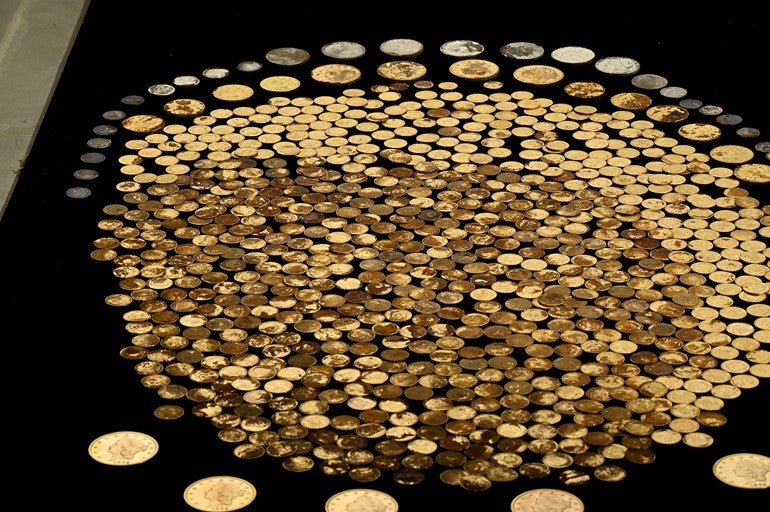Man discovers hundreds of gold coins buried in his cornfield that could be worth millions
The coins in the Kentucky cache are dated between 1840 and 1863

Your support helps us to tell the story
From reproductive rights to climate change to Big Tech, The Independent is on the ground when the story is developing. Whether it's investigating the financials of Elon Musk's pro-Trump PAC or producing our latest documentary, 'The A Word', which shines a light on the American women fighting for reproductive rights, we know how important it is to parse out the facts from the messaging.
At such a critical moment in US history, we need reporters on the ground. Your donation allows us to keep sending journalists to speak to both sides of the story.
The Independent is trusted by Americans across the entire political spectrum. And unlike many other quality news outlets, we choose not to lock Americans out of our reporting and analysis with paywalls. We believe quality journalism should be available to everyone, paid for by those who can afford it.
Your support makes all the difference.A man in Kentucky found 700 rare golden dollars from the Civil War era in his cornfield that are estimated to be worth millions.
The loot, dubbed the “The Great Kentucky Hoard”, could be worth a “six-figure price,” according to GovMint, an authorized coin dealer. Numismatic Guaranty Company (NGC) certified the coins’ authenticity and graded them.
“The importance of this discovery cannot be overstated, as the stunning number of over 700 gold dollars represents a virtual time capsule of Civil War-era coinage,” rare coin dealer Jeff Garrett told NGC.
The coins are dated between 1840 and 1863, and include $1 Gold Indians, $10 Gold Libertys and $20 Gold Libertys, according to GovMint, noting that the lattermost — a $20 Gold Liberty from 1863 —c ould be worth millions.
The cache also includes “1863 Gold Liberty Double Eagles, a super-rare date that is scarce in all grades,” the authentic dealer noted.
The discovery could also provide new insight into a bygone era.
Ryan McNutt, a conflict archaeologist and associate professor at Georgia Southern University, told Live Science: “Given the time period and the location in Kentucky, which was neutral at the time, it is entirely possible this was buried in advance of Confederate John Hunt Morgan’s June to July 1863 raid.”



Join our commenting forum
Join thought-provoking conversations, follow other Independent readers and see their replies
Comments